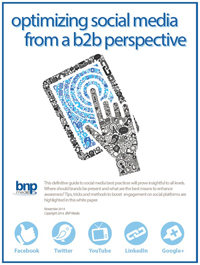In the end, the full house was a winner, and everyone involved deserves a hand.
NO AWKWARD SILENCES
The to-capacity event of course made us happy, but what really stood out was the quality of the interaction between the engineers in the audience and the presenters. The annoyingly constant relationship between time and space here on Earth kept me from attending more than one seminar at once. However, in every session I did attend, the post-presentation Q&A ran right up to the session's end. In several cases, we had to cut short Q&A that could've gone well past the time scheduled.The presenters I spoke with were, across the board, impressed with the group's participation and the caliber of the discussion. We've all been in those uncomfortable sessions where nobody wants to speak up; having none of that confirmed that we were getting the right people and the right topics together in the room.
WIRELESS ON THE RISE
We'll provide broader coverage on our blog (http://blog.esmagazine.com) and in the May print issue, but let's take a little time to look at one particular hot topic. Wireless, and the security for wireless applications, took a prominent role in more than one session. I moderated a morning session on wireless, featuring Rob Conant of Dust, Terry Hoffman of Johnson Controls, consultant Mark Pacelle, Trane's Jim Kohl, and Jay Hendrix of Siemens.After outlining the basic wireless controls strategies, Conant observed that while pulling wire is just a project expense to the leadership of an organization, it can represent a huge time sink to engineers further down the pyramid. He illustrated the potential labor savings by reporting on a wireless installation that would've taken around four weeks for a wired setup but instead took two hours.
Hoffman said that in life-cycle terms, wireless is already cheaper than wired. He expects the health care sector to provide the real leadership in pioneering wireless project, and says that at this point, user education is the biggest key to more engineers adapting the technology and more projects reaping the benefits.
Jay Hendrix also pointed to an interesting evolution in the equipment involving sensors that only wake up as needed to report information. No data to be moved means the sensors "sleep," prolonging performance and avoiding power and/or battery issues.
Further addressing battery issues, Kohl asserted that a typical AA battery could work 5 to 7 years but went on to mention "power harvesting." This approach involves solar energy or energy from other building vibrations harnessed to work instead of (or in tandem with) conventional battery power, with the alluring payoff of eliminating battery replacement completely.
As a consultant, Pacelle sees augmenting existing systems and installing sensors in more challenging spaces as the top opportunities in wireless. He thinks owners and engineers will embrace the potentially faster and more flexible retrofit process that wireless can offer.
Security remained a high priority for attendees thinking about wireless. The issue generated vertical concerns, ranging from protecting Navy operations to damage from an electromagnetic pulse, to more basic concerns like whether sensors and emitters have the same useful life. Hoffman and Hendrix went into the success of anti-hack deterrents and built-in detection, as well as the role wireless can safely play in life safety systems.
Alas, as often happened in Baltimore, there's more to say but no more time. Look for more on the topic in upcoming months, and thanks again to everyone who came out to make the event a success.ES




